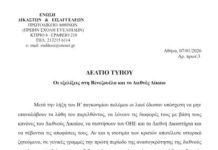Posted on Categories
All that shows that the West has actually set a course for military, strategic, political and psychological pressure on the Russian Federation, as well as the deliberate escalation of military tensions near the borders with Russia, which does not contribute to strategic stability.”
The Russian government news agency TASS reported on July 14 on stern warnings issued by the deputy secretary of the Russian Security Council, Mikhail Popov, in regard to NATO’s threat to his country. In an interview with the daily Rossiyskaya Gazeta, he said that recent Western activities demonstrate that the U.S. and its NATO allies have launched a campaign of military, political and psychological pressure against Russia and are escalating a dangerous military buildup on and near its borders.
Citing an almost an unbroken succession of large-scale NATO war games on Russia’s border from the Baltic Sea to the Black Sea – DEFENDER Europe 21, Baltic Operations (BALTOPS) and the 32-nation Sea Breeze exercise in the Black Sea come most immediately to mind – he noted that in particular NATO has deployed warships as a mechanism for exerting pressure on Russia, said provocations being “based on an arbitrary interpretation of the provisions of international maritime law and long-standing naval traditions.”
He cited the incident of last month that might well have escalated into a military showdown between the West and Russia off the latter’s coast: “As an example, I will cite the recent incident involving Britain’s Defender warship that occurred in Russia’s territorial waters on June 23. British sailors deliberately resorted to a provocation and escalation, violating Russia’s maritime border. The Russian Federation’s stance on the incident is unambiguous – that was a pre-planned provocation, which was rightfully thwarted.”
He also mentioned a phenomenon that customarily heralds the event of an armed conflict: the intensification of surveillance flights near and on the borders of a targeted country. He said that over 1,000 planes and drones from NATO and NATO member states performed spying missions near Russia’s borders last year.
In what is the most ominous aspect of his comments, TASS paraphrased him pointing out “NATO’s intensified military activity as an increasing military threat to Russia,” especially the alliance’s “large-scale military drills near Russian borders that practiced employing large troop formations and nuclear weapons against Russia.“
He characterized – accurately – the recently-concluded U.S.-led DEFENDER-Europe 21 war games as the largest multinational military exercise held in Europe since the Cold War.
Popov was quoted in another TASS report as saying. “The mounting military dangers and military threats to Russia are also facilitated by NATO’s active military activities, the development of US global missile defense capabilities along with [the drills] practicing the use of large military formations and nuclear weapons against Russia.”
So-called missile defense is in fact the much-vaunted Son of Star Wars global interceptor missile program that when complete would render the retaliation/deterrence capability of Russia greatly diminished if not entirely neutralized. The U.S. and NATO have installed Standard Missile-3 interceptors in Romania, will do so in Poland and have permanently deployed Arleigh Burke-class guided-missile destroyers and Ticonderoga-class guided-missile cruisers (of which the U.S. has 84 in total) to Europe. Five of those American interceptor-missile ships have been deployed to the Black Sea so far this year.
He also warned that NATO’s development and deployment of conventional weapons in Europe with “a longer range and more powerful combat equipment” is a growing threat. He neglected to mention recent deployments of the strategic bombers that constituted the triad of the U.S. Cold War nuclear bomber fleet – B-1s, B-2s and B-52s – near Russia’s borders from the Arctic Ocean to the Black Sea.
The same news agency cited comments by the Russian delegation at the July 14 meeting of Shanghai Cooperation Organization foreign ministers in Dushanbe, Tajikistan on a disturbing development following the June 16 meeting of U.S. President Joe Biden and Russian President Vladimir that has not been divulged before.
The Russian side had hoped the U.S. would pledge to not only acknowledge the inadmissibility of nuclear war between the two countries, but also of any war, “considering the risks of it descending into a nuclear conflict between Russia and the U.S.” But the Biden administration refused the second half of the proposition. In the words of the unnamed source, “the parties so far agreed that it is precisely [only] a nuclear war that was inadmissible.”
At the meeting Putin also expressed concerns over the U.S. abandoning major components of the system of arms control over the last several years, mentioning in particular Washington unilaterally leaving the Intermediate-Range Nuclear Forces Treaty and the Open Skies Treaty
Published at news.antiwar.com











